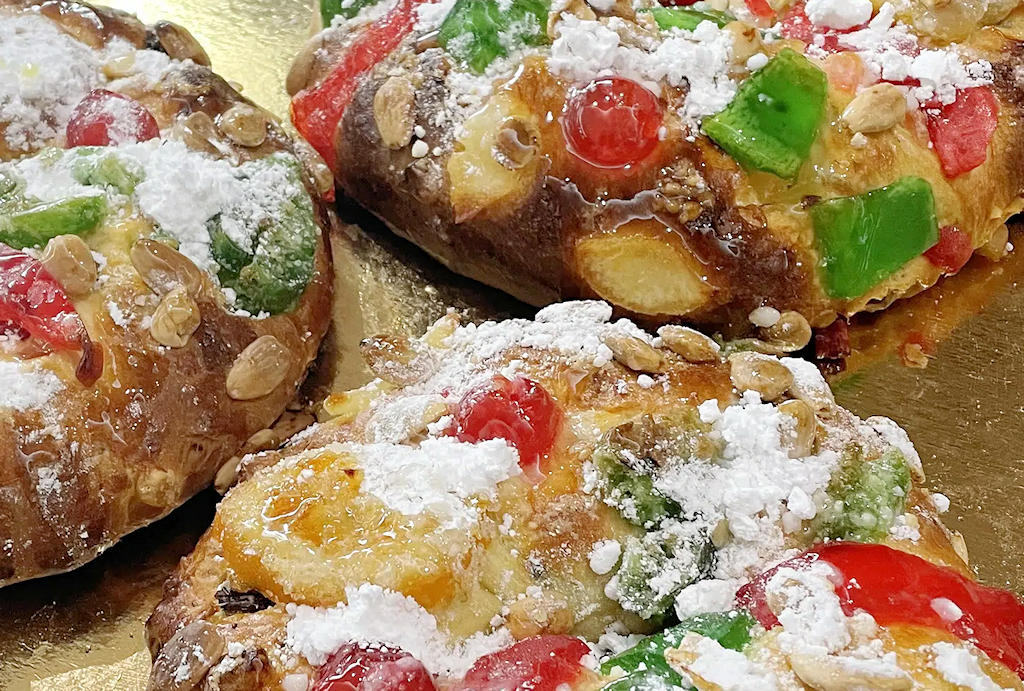One of the cherished traditions associated with Bolo-Rei is the hidden treasure within. Nestled within the cake lies a small figurine, often a king or baby Jesus. It is said that the fortunate person who discovers the hidden figurine in their slice is blessed with good luck for the year. Additionally, this lucky individual may bear the responsibility of procuring or crafting the next Bolo-Rei, continuing the cycle of joy and tradition.
The origins of Bolo-Rei can be traced back to ancient times, where the Romans celebrated the winter solstice with grand festivals dedicated to Saturn, the god of agriculture. During these festivities, round cakes filled with dried fruits and nuts were baked, concealing a bean. The fortunate recipient of the bean was crowned as the king of the feast, receiving special privileges. Over time, this tradition became intertwined with the Epiphany, a significant Christian observance commemorating the visit of the Magi to baby Jesus. The round cake symbolized the offerings presented by the wise men, as well as the crown adorning the newborn king.
The modern incarnation of Bolo-Rei emerged in 19th-century Portugal, thanks to the ingenuity of Confeitaria Nacional, a renowned pastry shop in Lisbon. Inspired by the French galette des rois, a puff pastry filled with almond cream, the Portuguese version showcased a yeast dough, elevating the cake's texture and complexity. The filling and topping were enriched with an abundance of fruits and nuts, further enhancing its indulgent character. The popularity of Bolo-Rei quickly spread throughout Portugal and beyond, embraced by regions and countries influenced by Portuguese culture.
Lisbon.vip Recommends
Beyond its delectable taste, Bolo-Rei is an embodiment of Portugal's rich cultural heritage. It serves as a gastronomic expression of the country's vibrant history, influenced by a tapestry of civilizations including the Romans, Christians, French, and more. Bolo-Rei encapsulates the spirit of sharing and celebrating with loved ones during the Christmas season, fostering a sense of togetherness and warmth. It symbolizes more than just a cake; it represents the regal essence of Portuguese Christmas traditions.
As you stroll through the enchanting streets of Lisbon, exploring its historical treasures and immersing yourself in its festive atmosphere, allow Bolo-Rei to transport you to a realm of royal indulgence. Each slice unveils a symphony of flavors, offering a glimpse into the cultural heritage that has shaped Portugal's identity. Bolo-Rei is more than a cake fit for a king; it is a treasured tradition that invites you to savor the enchantment of Portuguese Christmas.



